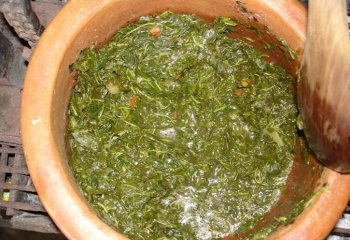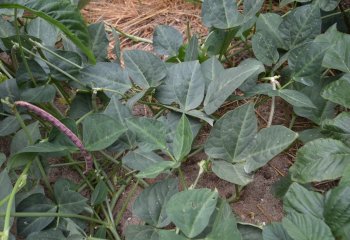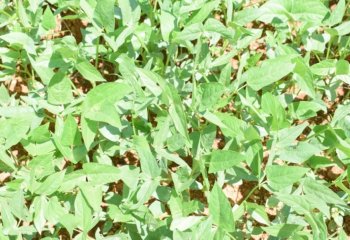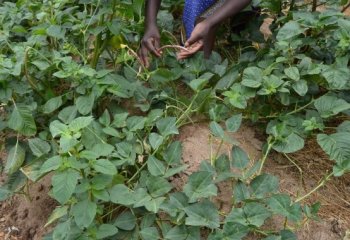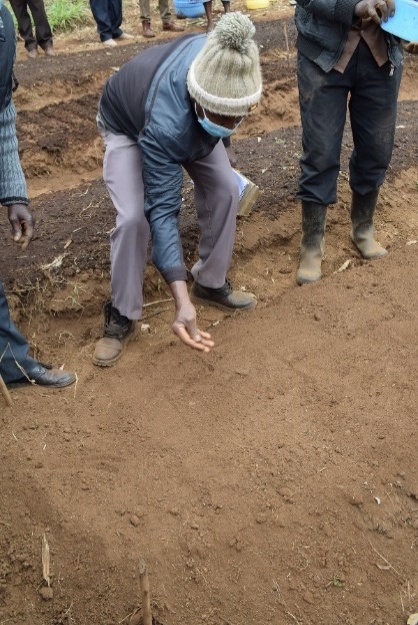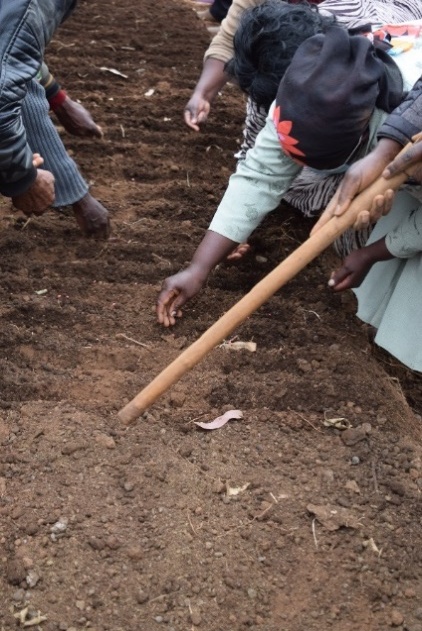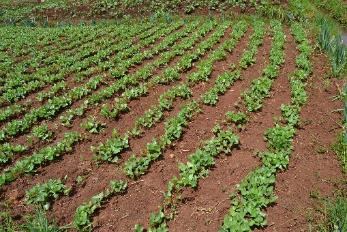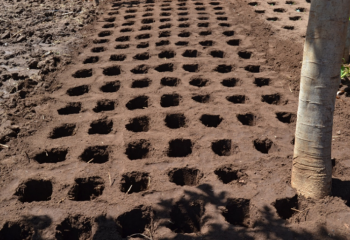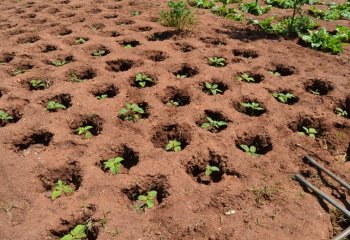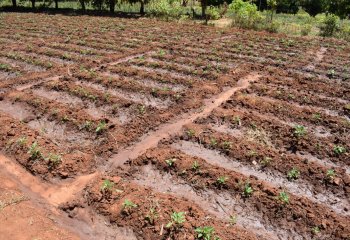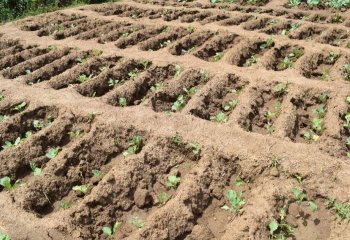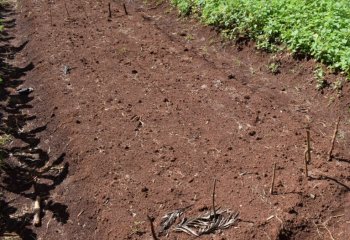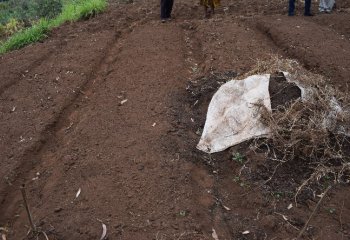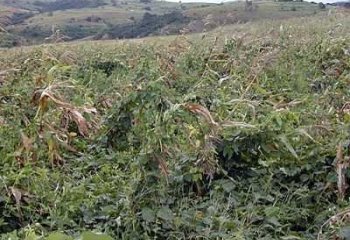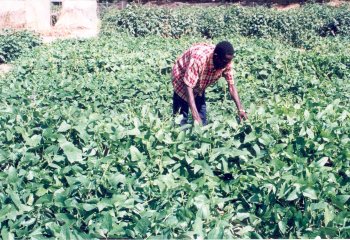Geographical Distribution in Africa
Read more
Angola: (a)kunde (Umubumbu); Feijao-macundi (Portuguese) (Bossard, 1996)
Benin: Ayiman (Fon, Mahi, Adja, Cotafon, Aizo, Oueme); Ewa (Idatcha, Tchabè, Nagot, Holly); Yangutu (Waama); Atchakabo, Guései (Anii); Blaa (Boko); Suiwurusu (Bariba); Titukpindi, Toutoufari (Gourmantché); Tituʹnti (Otammari); Yiman (Cotafon); Yiviman (Aizo); Sonanfadé (Kotokoli). (Achigan et al., 2010)
Botswana: Makgoman, Lefswe, Xoro, Khabeche ya Setswana, Sepasepe, Shepashepe, Seropolane/ Leropolane, Motomotsane, Morongo wa dinawa, Nibo we Nyemba (AVRDC & IPGRI, 2006)
Burundi: Umunkambira, Umukubikubi, Umukubi (Kirundi) (Bigendako, 1990)
Burkina Faso: Haricot Indigène (French), Benga (Mooré), Soso (Bambara), Sôsô (Sanan), Benga (Mooré) (Fernandez De La Pradilla, 1981) (African museums)
Cameroon: Niebe (Fulfuldé) (Malzy, P., 1954); Koki (Niébé) (Ngene et al., 2015)
Côte d’Ivoire: Kingononodéré, Kwionondéré (Shien); Kouyononadéré (Nekedie); Tounélézèri (Gouro) (Armand B & Debray, 1974).
Democratic Republic of the Congo: Zangi bia nzi (Kikongo); Ndamba (Kimpouni et al., 2018)
Ethiopia: Adagura (Tigrigna) (Kidane et al., 2018); Hiphoo (Afaan Oromo) (Megersa et al., 2013)
Gambia: Soso (Mandigo) (Dvolo et al., 1976)
Ghana: Tuya (Dagomba and Frafra); Adua (Twi); Ayi (Ewe); Too (Bemoda); Tipielega (Mamprussi); Yo (Ga and Krobo); Saau (Gurunshi) (Heuzé et al., 2015)
Guinea Bissau: Canhabu (Bijagó) (African Museums, 2021)
Kenya: Tsafe, Kunde (Chonyi); Chani, Kunde (Digo); Nthoroko (Embu); Tsafe (Giriama); Nthooko, Nzooko (Kamba); Kilusya (Kambe); Thoroko, Mathoroko (Kikuyu); Kundet (Kipsigis); Egesale or Egesare (Kisii); Sikhubi, Sikhuvbi (Bukusu); Likhuvi (Isukha, Marachi); Likhubi, Likhuvi (Luhya, Maragoli); Kunde (Swahili, Kipsigis); Bo, Alot-bo (Luo) (Maundu et al., 1999).
Madagascar: Loji (Andriamparany et al., 2014).
Malawi: Nseula; Makangata (Chigale); Nseula, Sugama (Kaombe); Khobwe; Ngunde (Kapyepye); Chitambe, Khobwe (Makawa) (Maundu, 2007)
Mali: Nimu "Teng Soo" (Bandiagara) (Inngjerdingen et al., 2014)
Mauritania: Adlagan (Arabic) (Yebouk et al., 2020).
Mozambique: Folha de nhemba (Maundu, 2007)
Nigeria: Mongo (Bagarmi); Wake (Hausa); Ezo (Nupe); Nyebbe (Fulani); Ngalo (Kanuri); Azzo (Gbari); Dijok (Katab); Alev & Arebe (Tivi); Lubia (Shuwa); Akedi (Ibo); Akoti (Efik) (Dvolo et al., 1976); Ewa/Eree (Yoruba), Agua (Igbo), Agwa/Wake (Hausa) (Aiyeloja, A.A., & Bello, O.A., 2006) Owi-Ahun (Yoruba), Wakin-Tunka (Hausa) (Bhat et al., 1990); Ewa Funfun (Erinoso et al., 2012)
Sierra Leone: Seneni (Yalunka) (Dvolo et al., 1976);
Senegal: Nadio (Wolof); Ndiabe (Pulaar); Naadio,O-Gnaou (Seereer) (AVRDC &IPGRI, 2006); Sep (Peul/Fulani) (Kerharo & Adam, 1964).
South Africa: Akkerboon, Swartbekboon, Boontjie, Koertjie, Dopboontjie (Afrikaans); Dinawa (Plural), Monawa, Nawa (Sepedi); Dinaba, Munaoa, Tinyawa (Shangaan); Dinawa, Nawa ea-setswana (Setswana); Munawa (Plant), Nawa (Fruit) (Tshivenda); Imbumba, Indumba, Isihlumaya (Isizulu).
(Heuzé et al., 2015); Isikhwali (Zulu) (Constant, N. L., & Tshisikhawe, M. P., 2018)
Sudan: Luba hilu (OECD, 2016)
Tanzania; Safwe (Gogo); Ichikunyinyi (Kuria); Kusa, Maroro ngosa, Maruru ya ngusa, Nsansa, Sansa (Nyaturu); Shafa (Sambaa) (Maundu, 2014); Chikunde Mbala (Zaramo); Kunde (Swahili) (Chhabra et al., 1990)
Togo: Kedesche & Sona (Tschaudjo); Kadje (Basari); Tombing (Kabure); Isanje (Konkomba) (Heuzé et al., 2015); Ayigbé, Ayidjé (Ewé) (Adjanohoun, 1985)
Uganda: Mugobiswa e mpindi (Rutooro); Akaihakuru (Nyankore); Empindi (Rutooro) (Namukobe et al., 2011); Ikote, Mpindi enjahirwa (Bulamogi county) (Semenya, S.& Maroyi, A., 2012); Kiyindiru (Luganda) (Tugume et al., 2016); Obo ayom / obo alwal (Alur) (Anywar et al., 2014); Akaihakuru (Nyankore); Bole (Padhola) (Kokwaro, 1993).
Introduction
Cowpeas is an annual crop mainly grown for its leaves and seed. The growth habit is climbing, spreading, or erect. Cowpea is a very old crop. Africa is cited as the probable origin of the species based on the large genetic diversity of the cultivated and wild types. The crop exhibits much variation in growth habit, leaf shape, flower color, pod and seed size, shape and color. Cowpeas are important in warm marginal rainfall areas because they are well adapted to dry climates. Cowpeas are cultivated for the green or dried seeds and pods, leaves, pasture, hay, silage and green manure. Tender cowpea leaves and shoots contain about 4% protein and 4% carbohydrates and are rich in calcium, phosphorus and vitamin B. Dried seeds contain about 22% protein and 61% carbohydrates.
Cowpea leaves are widely consumed as vegetables in Africa. The vegetables may be cooked alone or with other vegetables. Jute mallow (Corchorus olitorius) is preferred because it helps soften the cowpea leaves. The vegetables are typically eaten with stiff porridge or mashed with maize, potatoes, or other pulses. In Botswana and Zimbabwe, boiled cowpea leaves are kneaded to a pulp, squeezed into small balls, dried and stored. Cowpea leaves may be preserved by sun drying or blanching and stored for several months.
In Africa, where cowpeas are the preferred food legume, the mature cowpea seeds may be cooked with vegetables, spices and often palm oil to produce a thick pulse soup, which accompanies the staple food (cassava, yams, plantain). In West Africa, the seeds are decorticated and ground into flour and mixed with chopped onions and spices and made into cakes that are either deep-fried or fried (Akara balls). The Immature, green and still soft seeds are cooked in a thick soup and used as a relish.
In addition to its use as human food, cowpea is used as a fodder crop for green feeding, haymaking, grazing and ensiling in a mixture of sorghum or maize. The roots are reportedly very poisonous. Various medicinal uses of cowpea have been reported. The root is used as an antidote for snakebites. For more on medicinal uses, see Grubben et al., 2004 and Madamba et al., 2006 (AVRDC & IPGRI, 2006).
|
|
Geographical distribution
Geographical distribution of cowpea. Source. https://www.gbif.org/species/2982583© OpenStreetMap contributors, © OpenMapTiles, GBIF
Vigna unguiculata originated in Africa, where a large genetic diversity in wild types occurs throughout the continent. It is the most important legume in the warm sub-humid and savanna areas of Africa. The greatest genetic diversity is found in West Africa, particularly in the savanna regions Vigna unguiculata originated in Africa, where a large genetic diversity in wild types occurs throughout the continent. It is the most important legume in the warm sub-humid and savanna areas of Africa. The greatest genetic diversity is found in West Africa, particularly in the savanna regions of Burkina Faso, Ghana, Togo, Benin, Niger, Nigeria and Cameroon. It has been introduced in Madagascar and other Indian Ocean islands. It is however less prominent in humid central Africa and the cooler highlands of Africa (Madamba et al., 2006; Schippers, 2000).of Burkina Faso, Ghana, Togo, Benin, Niger, Nigeria and Cameroon. It has been introduced in Madagascar and other Indian Ocean islands. It is however less prominent in humid central Africa and the cooler highlands of Africa (Madamba et al., 2006; Schippers, 2000).
General Information (Species account, Ecological Information)
Species account
Cowpea is an erect, trailing, or climbing annual or perennial herb. The flowers are of various colors, from pale green to light blue or purple, sometimes white or yellowish. The long, nearly cylindrical pod can range between 8 and 120 cm in length and may be straight or slightly curved, cream to brown or reddish purple when dry and 8-30-seeded. Seeds can be mottled or varying uniform colours ranging from white or cream to maroon or brown to black. The seeds of popular cowpea varieties, such as "black-eyed pea" and "pinkeye purple hull" typically have a white color with a circular, asymmetrical black or red pigmented region surrounding the hilum that gives the seeds the appearance of an eye (Madamba et al., 2006, AVRDC & IPGRI, 2006, Timko & Singh, 2008, Schippers, 2000).
Cowpea varieties and their characteristics
Cowpea has several subspecies that include both wild and cultivated types. Cowpea varieties may differ in habit, maturity period, yield, drought tolerance, resistance to disease and pests and weather good for seed or leaves and leaf and seed size. Preference may vary with the farmer (Omoigui et al., 2018, Madamba et al., 2006).
Examples of cowpeas varieties in Kenya
|
Variety |
Days to Maturity |
Target areas of production |
Potential grain yield (t/ha) |
Remarks |
|||
|
"Machakos 66" (M66)
|
85-95 |
Mid altitudes 1200-1500 m above sea level |
1.5-1.8 |
Dual purpose; creamy brown grains and suitable for intercropping; tolerant to cowpea yellow mosaic virus (CYMV) and scab; moderately tolerant to Septoria leaf spot and powdery mildew |
|||
|
"Katumani 80" (K80)
|
75-85 |
Drier areas or areas below 1500 m above sea level receiving less than 200 mm of rain per season |
1.8-2.0 |
Dual purpose; grains creamy brown; resistant to aphids; moderately tolerant to thrips, pod borers and leaf hoppers; susceptible to CYMV |
|||
|
"KVU 27-1"
|
70-90 |
600 - 1200 m |
1.5-1.8 |
Dual purpose; dark red grains; moderately tolerant to aphids, thrips, pod borers and leaf hoppers; moderately resistant to foliar fungal diseases and CYMV |
|||
|
"KVU-419" |
65-72 |
Areas below 1200 m receiving less than 200 mm of rain per season |
1.2-1.5 |
Grain variety; smaller seed than both "M66" and "K80"; tolerant to cold and recovers very fast from drought |
|||
|
"KVU HB 48E 10" |
85-95 |
Medium and higher altitudes 1200-1500 m above sea level |
1.2-1.4 |
More vegetable type than grain type; tolerant to virus diseases |
|||
|
"KCP 022" |
60-75 |
0-1200 m |
1.2-1.5 |
Drought tolerant |
|||
|
"MTW 63" |
60 |
1-1500 m |
2.5 |
Pest tolerant |
|||
|
"MTW 610" |
60 |
1-1500 m |
2.5 |
Large grains |
|||
|
"Kunde 1" |
75-90 |
Below 2000 m |
1.2-2.5 |
Dual purpose |
|||
|
"ICV" |
75 |
1-1500 m |
2.2 |
Pest tolerant |
|||
|
"Ngombe" |
|
|
|
Semi-spreading, suitable for green leaf production, sweet taste of grain |
|||
|
Local varieties(land races) |
|
|
0.3-0.5 |
Varying colors and spreading or semi spreading |
Examples of cowpea varieties in Tanzania
- "Fahari" (altitude recommended: 0-1500 m; days to flowering: 50; yellowish grain brown; grain yield: 2.4 t/ha; resistant to CYMV
- "Tumaini" (altitude recommended: 0-1500 m; days to flowering: 48; grain cream; grain yield: 2.4 t/ha; resistant to CYMV and moderately resistant to bacterial blight
- "Vuli 1" (altitude recommended: 0-1500 m; grain red; grain yield:1.8-2.0 t/ha; resistant to CYMV and moderately resistant to bacterial blight
- "Vuli 2" (altitude recommended: below 1500 m; grain creamish white; grain yield: 2.0-2.5 t/ha; resistant to CYMV and bacterial blight; moderately susceptible to pests
Examples of cowpea varieties in Uganda
- "Amul" (local variety: regions: eastern and northern districts of Uganda; yield potential; 0.5 t/ha)
- "Apei" (local variety: regions: eastern and northern districts of Uganda; yield potential; 0.5 t/ha)
- "Apio" (local variety: regions: eastern and northern districts of Uganda; yield potential; 0.5 t/ha)
- "Ebelat" (local variety: regions: eastern and northern districts of Uganda; yield potential; 0.5 t/ha)
- "Icinkukwa" (local variety: regions: eastern and northern districts of Uganda; yield potential; 0.5 t/ha)
- "Katumani 80" (as in Kenya)
- "Kisyanka" (local variety: regions: eastern and northern districts of Uganda; yield potential; 0.5 t/ha)
- "IT82D-522-1" (new variety; yield potential: 4.5 t/ha)
- "IT85F-1987" (new variety: yield potential: 2.1 t/h"Amul" (local variety: regions: eastern and northern districts of Uganda; yield potential; 0.5 t/ha)
- "Apei" (local variety: regions: eastern and northern districts of Uganda; yield potential; 0.5 t/ha)
- "Apio" (local variety: regions: eastern and northern districts of Uganda; yield potential; 0.5 t/ha)
- "Ebelat" (local variety: regions: eastern and northern districts of Uganda; yield potential; 0.5 t/ha)
- "Icinkukwa" (local variety: regions: eastern and northern districts of Uganda; yield potential; 0.5 t/ha)
- "Katumani 80" (as in Kenya)
- "Kisyanka" (local variety: regions: eastern and northern districts of Uganda; yield potential; 0.5 t/ha)
- "IT82D-522-1" (new variety; yield potential: 4.5 t/ha)
- "IT85F-1987" (new variety: yield potential: 2.1 t/ha)
Examples of cowpea varieties in Nigeria
|
Variety |
Yield (t/ha) |
Other qualities |
Agroecological zones |
|
IT99K-573-1-1 (SAMPEA14) |
2.6 |
Resistant to fusarium wilt and striga, tolerant to drought |
Northern Guinea savanna, Sahel, Sudan savanna |
|
IT99K-573-2-1 (SAMPEA15) |
2.6 |
Tolerant to drought, resistant to striga |
Northern Guinea savanna, as well as Sahel and Sudan savanna |
|
UAM09 1055-6 (FUAMPEA 1) |
1.9 |
Tolerant to drought, resistant to striga, short cooking time |
Sudan savanna and Sahel region |
|
UAM09 1051-1 (FUAMPEA 2) |
2 |
Short cooking time, resistant to striga. Good for intercropping |
Sudan and Northern Guinea savanna |
|
IT89KD-288 (SAMPEA 11) |
2 |
Resistant to nematodes. Good for intercropping |
Northern Guinea savanna |
|
IT07K-292-10 (SAMPEA16) |
2.5 |
Tolerant to drought |
Sudan savanna and the Sahelian region |
|
IT07K-313-18 (SAMPEA17) |
2.5 |
Tolerant to striga |
Sudan savanna and |
|
UAM14 130-20-4 |
2.2 |
Suitable for confectionary, Resistant to striga and alectra. Good for intercropping |
Sudan and Guinea savanna |
|
UAM14 127-20- |
2 |
Suitable for confectionary, resistant to striga and alectra, Good for intercropping |
Sudan and Guinea savannas |
|
UAM14 123-18-3 |
2 |
Suitable for confectionary, resistant to striga and alectra, |
Sudan and Guinea savannas |
|
UAM14 126 19-2 |
2.5 |
Suitable for confectionary, resistant to striga and alectra. Good for intercropping |
Sudan and Guinea savannas |
|
UAM15 127-1-7 |
2 |
Suitable for confectionary, resistant to striga and alectra. Good for intercropping |
Sudan and Guinea savannas |
|
UAM15 137-1-7 |
2 |
Suitable for confectionary, resistant to striga and alectra. Good for intercropping |
Sudan and Guinea savannas |
Source: Guide to cowpea production in West Africa. (Published 2013) https://hdl.handle.net/10568/108728
Ecological information
Cowpeas are generally tolerant to drought and low light conditions but are very susceptible to various insects and diseases and do not do well in poorly drained and cool areas. Local landraces of cowpeas grown by farmers in West Africa are well adapted, so they start to flower at the end of the rains in a particular locality. The optimum temperature for their growth and development is 20 to 35 deg. C. Cowpeas can grow in a wide range of soils, are well adapted to light sandy soils where most other crops produce poorly and do well on acid soils. They show vigorous vegetative growth on heavily fertile soils but not necessarily a good grain yield. Most varieties need a minimum rainfall of 200 mm during a growing season.
Agronomic aspects
Planting
Land should be prepared to a fine tilth for good root growth. Generally, deep ploughing followed by harrowing provides an adequate tilth. Farmyard manure application is at the rate of about 36 tonnes/ha (360 kg per 10x10 m square). Sowing rates depend on the type. Creeping types need more space. Erect types of cowpea seeds may be planted about 20 to 40 cm apart if erect intercropped with pearl millet, sorghum, or maize. Tillage typically follows the crop with which cowpeas are interplanted. When produced as a green vegetable, they are commonly grown as a monocrop in rows 30 to 40 cm apart, with 8 to 12 cm between plants. These are then uprooted and sold once they have attained the right height. Some very drought-resistant creeping types, may grow for two seasons on the farm and hence the spacing will be more.
|
|
Row planting
Cowpeas are commonly grown mixed with other plants but can also be grown as a monocrop in rows.
The following is a basic procedure for row-planting erect cowpeas for uprooting:
1. Make shallow furrows e.g. with a stick or finger. Leave about 20-30 cm between rows.
2. Drop your seeds evenly as you move steadily along the row.
3. Cover the seeds lightly e.g. by sprinkling fine soil on top.
4. Water your seeds. Avoid washing them out of the furrows
|
|
|
|
|
|
Dryland water conservation measures
In Africa's arid and semi-arid areas, cowpeas can be grown in sunken beds or Zai pits to conserve moisture. Drip irrigation is also getting popular.
Growing cowpeas in planting pits and furrows
Planting pits or Zai pits (Zaï pits (Burkina Faso), Chololo pits (Tanzania), tassa (Niger), agun pits (Sudan), kofyarpits (Nigeria)) are popular in dryland farming especially around water sources. They are considered to be water-efficient farming technologies as they optimize water utilization by a crop. The size and configuration of the Zai pits are tailored to the type of crop being cultivated. By collecting irrigation or rainwater that would otherwise be lost due to runoff or percolation into unintended areas, the pits facilitate prolonged water retention, thereby allowing for gradual and more efficient usage by the crops.
How to make a Zai pit:
- Remove the topsoil and set it aside
- Continue digging to a depth of 45 cm to break the hardpan.
- Make sure the holes are dug running perpendicularly to the slope then putting the soil from the holes downslope (to create a small soil wall/bund to keep the water in the hole)
- Mix the topsoil with manure or compost and return it to the pit. Leave a depth of about 15 cm.
- Water the soil in the pit and plant the vegetable.
- (Source: Greener Land, June 2023; Maundu et al., 2022)
|
|
|
|
In dryland irrigated systems, cowpeas may also be grown in a system of furrows or basins or sunken beds. Irrigation water is filled in the furrows or basins. The seed is placed on the sides of the ridge in the case of furrows and on the floor in the case of a basin.
|
|
Sunken beds or basins may vary in size from about a square meter to several square meters. The shape may also vary from square to rectangular. Closed systems may accumulate salt with time and hence the need to allow rainwater to flush out the salt when it rains.
|
|
|
|
Raised beds in humid areas
In humid areas, cowpeas should be grown in well-drained soils or on raised beds. Beds are only suitable for erect cowpea plants, particularly those that are meant for the market.
The following procedure can be used while planting on raised beds.
1. Dig deep to loosen the soil and break any hardpan.
2. Prepare your raised beds, each 1 m wide. Leave 30 cm furrows for drainage and stepping on while working, e.g., weeding and watering the plants.
3. Avail enough water and well-cured compost or manure. Cattle-based manure retains potency for much longer than most other domestic animals. Donkey-based manure is of poor quality.
4. Mix the topsoil with manure evenly. A bucket of manure per square meter is sufficient.
5. Level the bed again. A hoe handle does an excellent job of leveling.
|
Ⓒ Maundu, 2021 |
|
Ⓒ Maundu, 2021 |
Husbandry
Most cowpea crops are rain-fed, a few are irrigated and others use residual moisture in the soil after the harvest of a rice crop or receding river or dam water. Cowpeas are particularly well suited for rice-based cropping systems. Parasitic weeds, such as Striga gesnerioides (Purple witchweed), generally associated with the continuous cropping of cowpeas in Africa, may also cause severe damage. One additional benefit of cultivating cowpeas is their ability to fix atmospheric nitrogen in root nodules through symbiosis with Rhizobium bacteria that are common in most soils. An effective Cowpea-Rhizobium symbiosis may fix more than 150 kg/ha of N and may supply 80-90% of the total N required.
Inoculation may be advantageous if the crop has not been grown for many years. In general, no fertilizers are applied. Cowpeas are commonly incorporated in crop rotations in most places where it is cultivated. A cowpea crop of the leafy types grown before a maize or millet crop and incorporated green into the soil can produce a good grain crop without any addition of more nitrogen. Intercropped cowpeas also share nitrogen with other crops, e.g., maize, millet, sorghum and cotton. For intercropping, choose a cowpea variety carefully - the spreading types may overpower other crops, such as cotton, by entangling their branches and interfering with fieldwork. Cowpeas do not normally respond to nitrogen or phosphorus fertilizers, so none need to be added. However, where soils are highly eroded, an application of 4.5 tonnes/ha of dry compost or manure is beneficial. Weed during the crop's early stages, the cowpeas will later cover the ground and suppress weeds, including purple witchweeds.
|
Roger P. Ellis, Courtesy of Ecoport (www.ecoport.org) |
|
Ⓒ Maundu, 2003 |
Review Process
Dr. Patrick Maundu, James Kioko, Charei Munene and Monique Hunziker, December 2023

